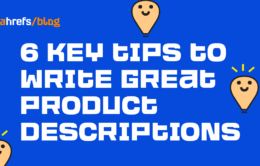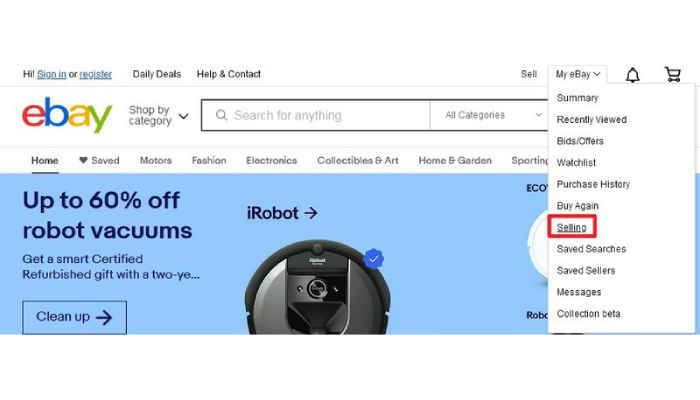Controlling the consumer experience of your brand is key to how people see it and how they interact with it. For SEOs, the part of brand experience that we control the most is the SERP, yet traditional ways of measuring brand reach on the SERP often fall short.
Today, Dominic talks through an example of how they fall short, and how we can do better.
Click on the whiteboard image above to open a high resolution version in a new tab!
Video Transcription
Howdy, Moz fans. I’m Dominic. I am the founder of Piped Out, and I’m here to talk to you about measuring your brand. If you have a product, controlling the consumer experience of that brand is very, very important. How do they see it and how do they interact with it?
As SEOs, the bit of that brand experience that we control the most are the SERPs, but traditional ways of measuring that often fall short. We’re going to talk through an example of how they fall short and how we can do better. So I’m going to use the example up here of cyberpunk.net. There was a video game that came out a little while ago called Cyberpunk 2077. I’m just picking this as an example of a product that had some real brand reputation problems.
It did not have a good launch. So if you were an SEO working for them, how might you’ve gone about controlling and measuring how well you were controlling their brand experience? Over here we’ve got our SERP. Our SERP is we’ve got some fairly standard blue link results where we’ve got a title and a meta description. We’ve got some other richer elements, things like a video block down here anda People Also Ask block. We’ve got a knowledge block over to the side. If we’re looking at this in a rank tracker, we’d go, okay, so for cyberpunk.net, the primary domain that we control, here’s our rank, and over time we’ve moved from five to four, fantastic.
Outside of brand, this is not a terrible way to do it. This is, of course, for a single keyword because we can see the sort of fluctuations there. If we have multiple keywords, we’ll have an aggregate so that it will become an average. It’s probably going to look a bit smoother. Maybe we’ve got something like bucket ranks sitting behind here, so the number of keywords that rank position one, number of keywords that rank position two, and we’ve got that to give us a bit of a richness over time.
But fundamentally, this is still a very simple picture for a branded SERP because, firstly, what we need to think about is how people have looked at SERPs has changed a bit over time. As SERPs have gotten richer, people like Nielsen have seen how we no longer just read straight down. We now ping pong around a bit more. We’re willing to interact with more of the SERP. On a branded SERP, this assumption here, Google has domain crowding, so ideally they’re trying not to show too many of each domain on each particular SERP.
But on a branded SERP, your goal is not to rank with one URL. Your goal is to rank with many URLs, and you have the ability to rank with many URLs unlike normal. For a branded term, like, for this example, it could be “Cyberpunk 2077.” It could be something slightly more loaded, like “is cyberpunk good.” It could be something slightly less loaded, like “is cyberpunk out.” All of these are branded terms, where I think the publisher has a really good chance of appearing for multiple places.
So the green one, right at position four or five, is our cyberpunk.net. But actually we also own position three. That’s our publisher domain, the people who published the game. So you’ve got the game website and the publisher thing. We also might want to count this as a win for us. We’ve got a journalist who’s a really good, basically, champion for our brand. They really like the game, and they’ve written a really positive article that’s down here.
There’s one up here in red. This is a negative article. This is someone who is not having such a good time with it. We might have our Twitter account and any other number of things, the YouTube accounts, all of these other bits that we could be getting onto our branded SERP. If we’re just measuring by rank, we’re only ever going to get one single number to sum up all of this richness. It’s just not good enough for brand. So how can we do better?
How do we take this? So firstly, what we need is a rich SERP data model. You can get this from anywhere. In practice, what we do at Piped Out is we use a service called DataForSEO, which is an API that gives a very rich SERP data model. We’d highly recommend. But there are plenty of services that offer this, and it really doesn’t matter which one you pick. What’s important is that you have a rich enough SERP data model to get all the ins and outs of each of these little SERP features.
So I don’t just have the People Also Ask box as a single block. I have each individual question in the People Also Ask box with the title that ranks and then the URL that is below that. Same thing for the video. I need a rich enough SERP data source that for the video element, I don’t just have the URL, I also get the source for a video block. Google has a little source there, and that’s actually the name of the account.
When you go and get all that rich data, you can then define what is yours or what you want to be yours. We don’t technically own this positive article, but we might count it as ours. So you can go and build up this definition of like all of the different things that you think are valuable. You then take this SERP data model and you say, okay, and you calculate the size for each of these things.
So how much is this size in pixels? This is an ordinary SERP block, so it’s probably about 180 pixels tall. So you calculate the height of all of these different elements that you own, and you can turn that, and you could do area as well, but height for a more basic version, and you could turn that into this, the percentage of owned SERP measured by pixels. What percentage of this SERP do you own?
Again, our definition of ownership is whatever we want it to be. This is enabled by having a very rich SERP data source. Now, we are getting a little bit of something here, which is that with rank, we obviously know five is better than four. We lose a little bit of that context when we come with something like this, which is that obviously ranking down here is not as good as ranking up here. But when we’re measuring size and all of these different elements, again, we can’t literally have all of them there.
So we have to have some sort of compromise for how do we measure importance without going just back to rank. I think an excellent compromise is to measure above the fold and first page, so the percentage of the pixels of the SERP that you own above the fold on desktop and mobile and on the first page by desktop and by mobile. So the idea is that you have a graph that looks something like this, where we can say, “Okay, for our site, for cyberpunk, for the set of keywords that we’re looking at, we own a growing percentage of the mobile pixels above the fold. Great, we’re controlling our brand experience.”
That gives us essentially a good idea of how what we’re doing as SEOs is controlling that branded SERP. Then when you’re doing brand projects and you’re trying to enrich and fill on this domain, you’re getting your results. You’re correctly measuring your results rather than having a very simplified picture where you can’t do this. Technically, like I said, this practically looks like finding a rich SERP data source.
In our case, at Piped Out, we take DataForSEO and we pump it into BigQuery. But again, it could be anything. Lots of great SERP API data sources do this. STAT might also do this. Don’t know. Go ask STAT because it’s a Moz product and this is a Moz blog. That’s pretty much it.
Go get that data source, use it to build these sort of dashboards, and you can get better insight into how well you’re controlling your brand. Thanks and we’ll see you next time.
Video transcription by Speechpad.com



